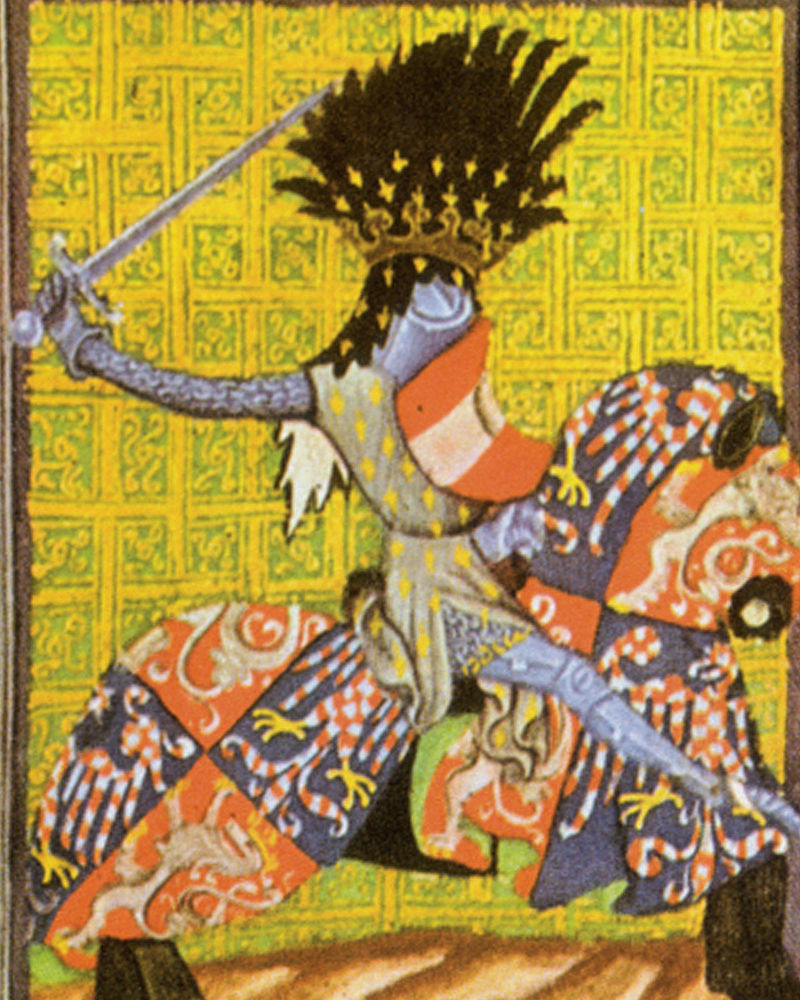The Battle of Kressenbrunn, 1260 AD

An Art de la Guerre Scenario by Arofan Gregory. (Illustration from the Chronica Hungarorum, 1488.)

An Art de la Guerre Scenario by Arofan Gregory. (Illustration from the Chronica Hungarorum, 1488.)
During the Golden Horde's depredations in the Kingdom of Hungary, it is estimated that half of the inhabitants perished (there are many different numbers, but all agree that the impact was dire). Following the Battle of Mohi, Bela IV, King of Hungary, was forced to flee to his nemesis Duke Frederick "the Warlike" of Austria, who - as might be expected - extorted a good deal of money from him and forced him to surrender many of his domains, including Styria (today southern Austria). Once at liberty, Bela proceeded to the Balkans to wait for the Mongols to depart.
When Duke Frederick was killed at the Battle of the Leitha River in 1246, his line went extinct. Seeing an opportunity, King Ottokar II of Bohemia assumed rule over the now-princeless lands, as the Holy Roman Emperor - technically the inheritor of the domain - was weakened, and Hungary devastated (it had still not recovered from the Mongol invasion). Bela IV, having returned to Hungary, declared (with the backing of the Pope) that Ottokar was an illegal ruler, and invaded with the intent to reclaim the area for Hungary.
In July of 1260, the armies of Bela IV of Hungary and King Ottokar II of Bohemia faced each other across the River March (the Morava) on the Austrian-Slovakian border near the modern city of Bratislava (then Pressburg). Both wished to come to blows, but refused to cross the river in the face of the enemy. Ottokar proposed that he withdraw his army and allow the Hungarians to come over so that a proper battle could be conducted. King Bela agreed.
Good to his word, Ottokar started to withdraw his forces when Bela's son - commander of one division of the Hungarian army - gave in to his hatred for the enemy and charged across the river. The Bohemians turned around and defeated the Hungarians in detail. This scenario begins with the withdrawal of the Bohemian forces from the river.

Bela IV is pursued by Mongols after the defeat at the Battle of Mohi, from the Chronicon Pictum, 1358-1373.
Below is a map of the table (standard ADLG size). Kressenbrunn is a village - "Schlosshof" (not the actual name at this period) - is where the Bohemians have established their fortified camp. The river is fordable but difficult going, and is 2 UD wide.

The armies are 200-point post-1150 Feudal Hungarian (#204) and Feudal German (#183). [The Hungarian army is out of its date range per the rules, but the list is a better one for the historical army in question.] The Hungarians may not have a fortified camp. The Bohemians must have one.
The Bohemians will set up anywhere on or West of a North-South line 6 UD from the near river bank, parallel to it, with at least one unit in each command 6 UD from the river. The Hungarians set up on the East bank of the river, with at least a third of each command on the river bank.
The goal for both commanders was to destroy the other's army - there are no special victory conditions for this scenario.
Until any shooting or combat occurs, special movement rules are in force. Each turn, one or more of the commands in the Hungarian army may attempt to transit directly across onto the far bank of the March, instead of normal movement, setting up within 2 UD of the river to the West. This requires a roll of 4-6 on a single die.
One Hungarian commander is designated as King Bela. If the other Hungarian commands are within 8 UD of the enemy, and have not yet fired on or meleed the enemy, at the start of their phase they must roll a die: on a 1 or 2 the units in that command will charge the enemy (if possible) or move to be in a position to do so, or to fire on them (if missile troops). This action represents the intention of that division's commander to engage the enemy, and will be sustained until this occurs. It is not an impetuous charge, but a controlled (if unordered) action.
Once this occurs, the special rules for Hungarians transiting the river are no longer in effect. While the transit rules are in effect, no Bohemian unit may move closer to the river than the starting line.

Ottokar II as depicted in the Gelnhausen Codex, circa 1400-1408.